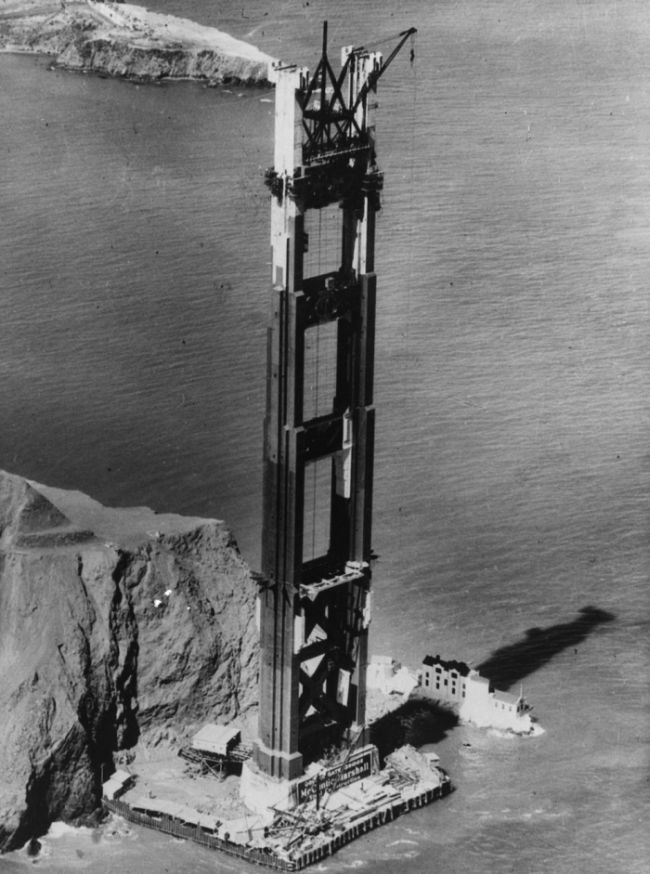|
|
History: Construction Of The Golden Gate Bridge, San Francisco, California, United States
|
Engineering professor Natalie Jeremijenko, as part of her Bureau of Inverse Technology art collective, created a "Despondency Index" by correlating the Dow Jones Industrial Average with the number of jumpers detected by "Suicide Boxes" containing motion-detecting cameras, which she claimed to have set up under the bridge. The boxes purportedly recorded 17 jumps in three months, far greater than the official count. The Whitney Museum, although questioning whether Jeremijenko's suicide-detection technology actually existed, nevertheless included her project in its prestigious Whitney Biennial.
Various methods have been tried to reduce the number of suicides. The bridge is fitted with suicide hotline telephones and staff patrol the bridge in carts, looking for people who appear to be planning to jump. Ironworkers on the bridge also volunteer their time to prevent suicides by talking to or wrestling down suicidal people. The bridge is now closed to pedestrians at night. Cyclists are still permitted across at night, but can buzz themselves in and out through the remotely controlled security gates. Attempts to introduce a suicide barrier have been thwarted by engineering difficulties, high costs, and public opposition. One recurring proposal had been to build a barrier to replace or augment the low railing, a component of the bridge's original architectural design. New barriers have eliminated suicides at other landmarks around the world, but were opposed for the Golden Gate Bridge for reasons of cost, aesthetics, and safety, as the load from a poorly designed barrier could significantly affect the bridge's structural integrity during a strong windstorm.
Strong appeals for a suicide barrier, fence, or other preventive measures were raised again by a well-organized vocal minority of psychiatry professionals, suicide barrier consultants, and families of jumpers beginning in January 2005. These efforts were given momentum by two films dealing with the topic of suicide and the Golden Gate Bridge. On January 14, 2005 the San Francisco Chronicle published an op-ed by writer-director Jenni Olson calling for a suicide barrier on the Golden Gate Bridge. The letter was, in part, an excerpt from the script of her film The Joy of Life, which world-premiered the following week, on January 20, 2005, at the Sundance Film Festival. The day before, on January 19, 2005, the Chronicle broke the news that filmmaker Eric Steel had been shooting suicide leaps from the bridge during the calendar year of 2004 for his film The Bridge, which would be released in 2006. A week later, The Joy of Life world-premiered at the Sundance Film Festival and video copies of the film were circulated to members of the Bridge District board of directors with the help of the Psychiatric Foundation of Northern California.
In the fall of 2005 the San Francisco Chronicle published a seven-part series of articles, titled "Lethal Beauty", focusing on the problem of suicide and the Golden Gate Bridge and emphasizing that a solution was not only possible but desirable.
|
|









